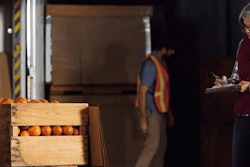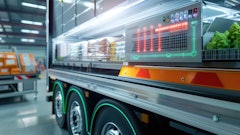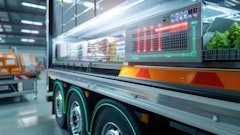
From enhancing visibility, building resiliency and mitigating risk to leveraging smart technologies and automated software, a digital supply chain means different things to different companies.
Yet, digitization itself presents the same benefits across the board in moving temperature-controlled foods in a safe and efficient manner.
Marina Mayer, Editor-in-Chief of Food Logistics and Supply & Demand Chain Executive, talks exclusively with Gabby Avery, director of strategic programs at Ware2Go, breaks down how digital transformation provides advanced order orchestration, enabling improved customer experience along the delivery line.
CLICK HERE to read the article in full.
Food Logistics: What is a digital supply chain? What does it mean for you/the cold food chain?
Gabby Avery: A digital supply chain is about automating as many manual processes as possible for greater efficiency, accuracy, and speed to delivery. Sales channels were digitized long ago, and it’s crucial for supply chains to undergo a similar digital transformation to keep pace with not only volume but also increasing consumer expectations around delivery.
Food Logistics: Describe some technologies and solutions defining the future of digital supply chains.
Avery: Machine learning has made waves in every sector, and the supply chain is no exception. Today, machine learning is being used to inform better demand forecasting as well as determine warehouse placement and inventory distribution. Fulfillment data can be used in these scenarios to not only improve operational efficiencies, but also to inform procurement strategy and even top of funnel marks strategies.
CLICK HERE to read the "Breaking Down the Digital Supply Chain" article in full.
Food Logistics: Where to start? How do companies start the journey toward a more digital supply chain? Outline some good first steps.
Avery: For the cold food chain or any supply chain, order orchestration is one of the primary opportunities for digital transformation. Basic order logic only considers a few variables like inventory levels and proximity to the end customer. Advanced order orchestration, on the other hand, can account for labor availability, weather events, sales channel prioritization, and more. This enables better and quicker decision-making to ensure orders are routed to the best possible fulfillment center to ensure the best outcomes in terms of both customer service and operational efficiency.
Food Logistics: Describe some other trends and challenges with regards to digital supply chains.
Avery: There is also opportunity to leverage AI to optimize customer experience when it comes to final-mile delivery. Consumers have high expectations for delivery tracking, with 67% reporting that they check tracking statuses daily. That means they’re aware when a package is stalled in the delivery process and are likely to contact customer service to find out where their order is.
New delivery risk technology leverages AI to identify packages that are at risk of missing their expected delivery date so merchants can proactively notify customers of shipping delays before they even reach out to customer service.
CLICK HERE to read the article in full.





















